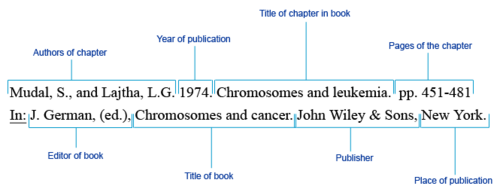Library:Library Research Skills For Biologists/Module 2A/Page 06
Appearance
ARCHIVE PAGE: Aug 2015
What is citing?
| In science, it is preferable to express the idea(s) of other authors in your own words, rather than directly quoting an author's work. However, even though you are expressing the ideas in your own words, it is important to give credit to the author both within the text of your work and at the end of your report or presentation in a bibliography. The act of referencing your sources(s) in your work and in a bibliography is called citation.
|
